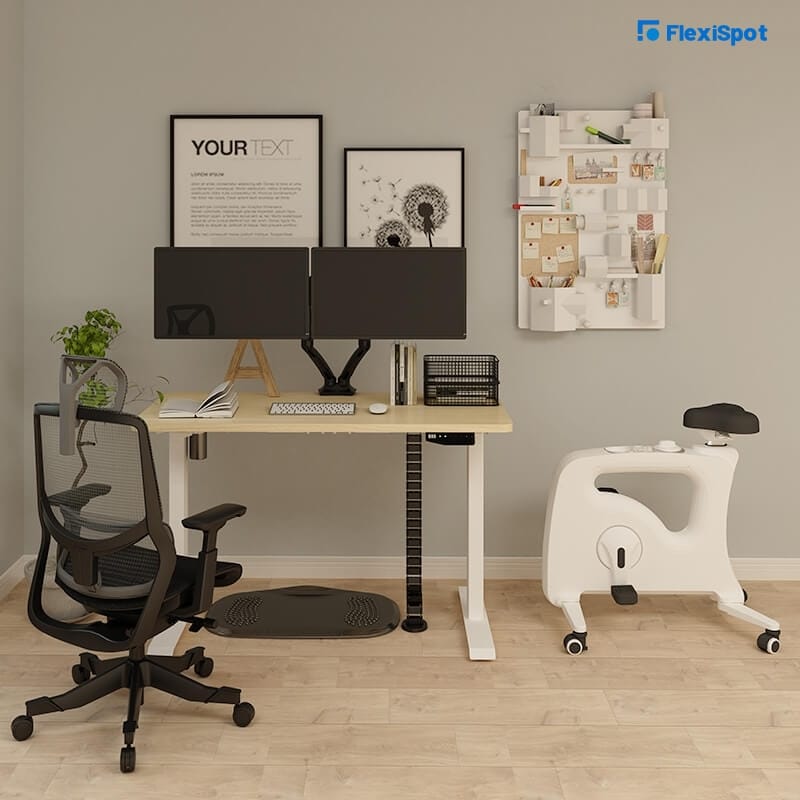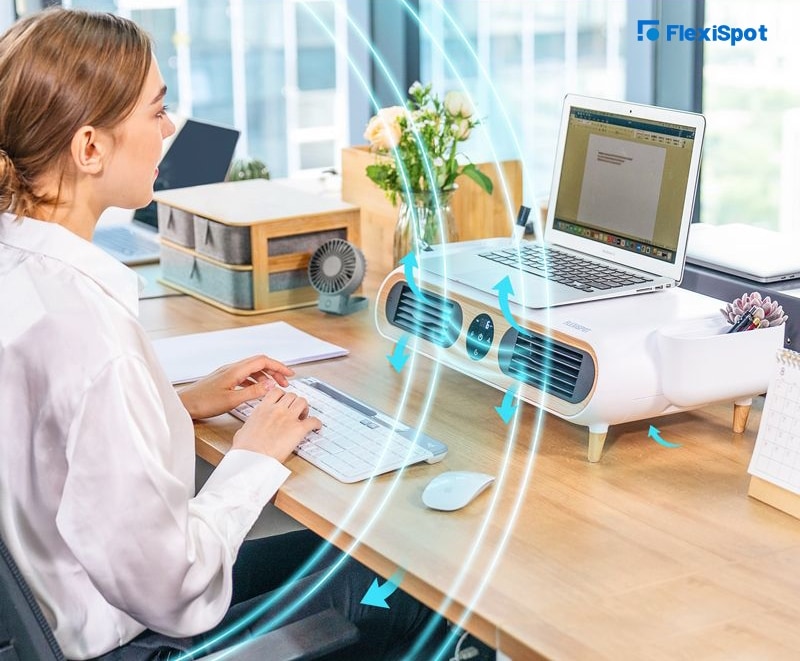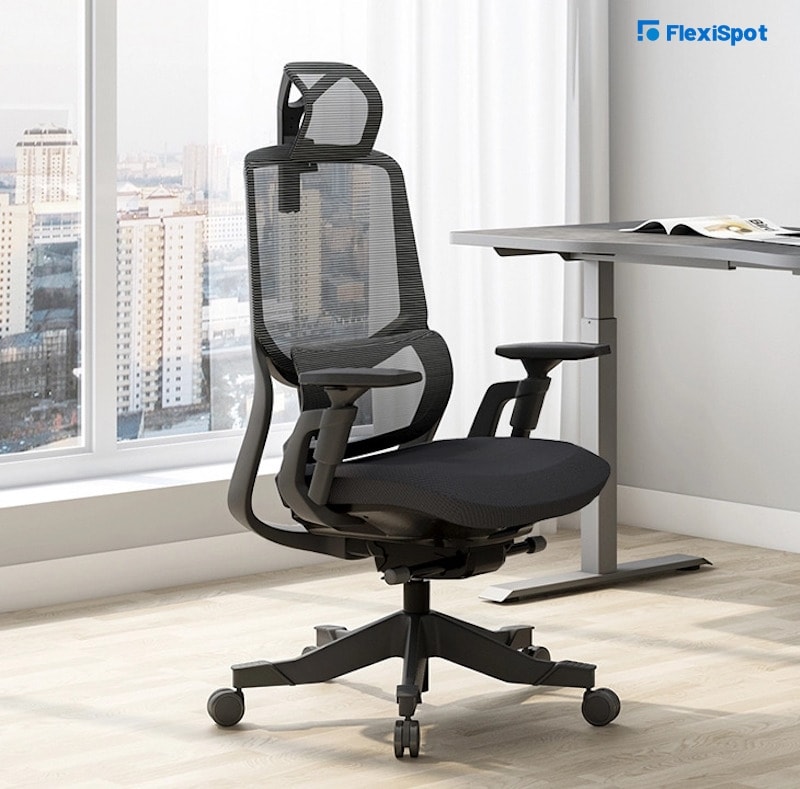When we think of ergonomics in the workplace, our mind jumps to aspects such as the physical layout of an employee’s workstation, the position they’re sitting at, their posture, and other such things.
While all of these are important aspects of workplace ergonomics, there is more to ergonomics than just your physical position. Over the past few years, the definition of ergonomics has expanded and now includes more than just the physical layout of the desks and workstations employees spend the day at.
Now, ergonomics includes the mental well-being of the employees as well as the physical, and also factors in things like the environment in which workers are spending the day.
What is Environmental Ergonomics?
Environmental ergonomics is one of the branches of ergonomics that takes into consideration how people interact with their physical environment. Rather than just taking into account how people are at their desks, good ergonomic practices look at the bigger picture: what kind of physical environment are employees working in, and what effect does it have on them?
Until a few decades ago, office jobs were reserved for the very elite, and a large majority of people were involved in manual labor. This is where the field of ergonomics was born. By taking into account the biomechanics of the human body, problems like musculoskeletal disorders were avoided and people remained physically healthy.
But that’s not all there is to health and safety. With more and more emphasis being placed on mental health and wellbeing, things that affect these things also come into the limelight. This means that factors beyond just the physical layout of the workspace have to be taken into account.
What are Environmental Factors in Ergonomics?
Environmental ergonomics in an office workplace is just as important as physical ergonomics. There are three main factors that get taken into account when considering the environment.
By understanding why these are important and how to address them, you can make your workplace better suited for your wellbeing.
Lighting
Any indoor workspace needs adequate lighting to make work possible. Most workspaces will choose to cut down on costs and use as little lighting needed as possible to make sure the task at hand gets done.
However, office work tends to be the kind where you need at least a medium to a high level of lighting. This should also take into account aspects like glare and contrast ratio, and make sure that any work done at computers and workstations is completed efficiently.
Glare can be a major issue for some workspaces, especially when it comes to computer monitors and their placement. Glare can be annoying to deal with at best and can make it outright impossible to see what’s on the screen at worst.
It is also best to use colors and surfaces that are not as reflective and thus minimize the likelihood of glare.
Offices should also have adjustable lighting for workstations so that people can adjust them according to the task they’re performing. While this is a bit costlier than setting up the same kind of lighting everywhere, it is much better for productivity.
In fact, lighting may also come up as a physical ergonomic concern. Without appropriate levels of lighting, employees may end up suffering from eye strain and fatigue, which can affect their eyesight. Some employees also complain about headaches and migraines from spending too much time working in bad lighting.
Noise
Office workspaces are expected to be quiet and peaceful places, but there is yet again, a range within which people can work comfortably. We all know that too much noise can be irritating and disruptive, but too much silence can do the same!
Usually, you wouldn’t have to worry about the problem of too much silence. Noise from computer fans, air conditioners, and the quiet buzz of conversation usually serves as enough white noise for you to focus.
A more pressing concern is that of higher levels of noise. Noise levels within a comfortable level are shown to improve productivity and focus since they are not disruptive. It is also much easier to hold a conversation with colleagues and be able to understand what is being said when background noise is at least 10 decibels lower than the conversation itself.
Given that the volume of any normal conversation usually occurs between 60-65 dB, the ideal noise level for office space should be somewhere between 40-50 dB. Any lower than that can get uncomfortable to sit in, and may actually end up reducing focus, rather than improving it.
It is also best to use sound-absorbing equipment and materials that will reduce the impact of loud noise and make it much more comfortable for workers to get their tasks done.
Climate
People work best when they are comfortable. This is true for all aspects of ergonomics – including physical. People work best if they have a comfortable desk and chair, and similarly, they work best when they are in a comfortable climate.
In fact, the climate of the office space can have a major impact on productivity levels, by virtue of having an equal impact on comfort. A better way to look at this would be to consider the components of climate itself: temperature, humidity, and air movement.
Temperature
Temperature is the easiest of these to understand. You wouldn’t be able to do anything too well if you were feeling too hot or too cold, regardless of whether you were working or spending your free time on something you like. The ideal temperature range is between 68-75 degrees Fahrenheit, but which end of the range to stay along may also depend on how it contrasts with the temperature outside.
The ideal temperature may also vary depending on the size of the office, the number of people in the office, and what temperature they feel more comfortable with. Of course, you can’t find one exact number to set your thermostat at, since people will have differing opinions, but by keeping the temperature within this range, you can ensure that a large majority of people are comfortable.
Humidity
Air humidity is a less easily controllable factor but is easy to understand. Higher humidity levels make it seem like the temperature has risen as well, and employees are likely to sweat more. This may end up reducing productivity levels.
The reverse is also true. As such, it is best to keep the humidity between 30 percent in the winters, when the temperature is generally lower, while a range of 40-60 percent is suitable for summers.
Air Movement
Within the office, air movement is often not a cause for concern, but it is best to keep a very light breeze around if possible. Workstations near open windows or vents may have greater air movement, which can get disruptive and annoying. When designing the office, it is best to account for vents and windows to minimize this kind of disruption.
Soutien Ergonomic Office Chair
The Flexispot Soutien Office Chair is a great piece of ergonomic office furniture that takes the environment into account. It also keeps in mind the physical ergonomics aspect of the workplace. It comes with a solid 3D lumbar support system designed specifically to make sure that employees don’t end up with back pains and aches, as well as three height adjustment levels to ensure that employees of all heights and stature can sit comfortably.
The backrest curves ergonomically to provide maximum comfort, not just to your back, but also to your neck. It also comes with a 45-degree tilt, which lets you recline comfortably when you decide to take a break, and has adjustable seat depth to help you find the right position in your seat depending on your body shape.
It also has cushioned armrests to make sure you’re sitting in the appropriate position at your desk – whether you’re typing away at a document or using your mouse, keeping your arm in the right position will make sure you don’t end up with sprained wrists or aching forearms.
On the environmental ergonomics side, the chair deals with the problem of temperature and humidity, with the use of breathable mesh for the chair’s body structure. This mesh allows air to pass through and keeps you from sweating after spending long hours in the same spot.
Having seats that are comfortable and adjustable for all types of employees can be a major plus factor in any workspace.
The impact of the environment on office ergonomics is often underestimated but is important to consider when designing the workplace. As long as employees are going to work, all aspects of ergonomics remain important.
Therefore, understanding the factors that make a difference and how to address them remain equally important, to make sure that employee wellbeing, productivity, and engagement are not compromised.




